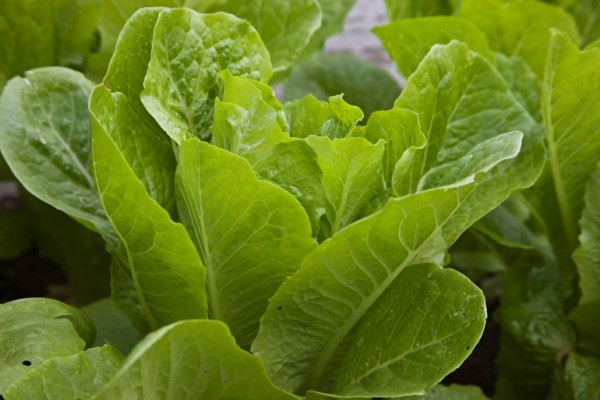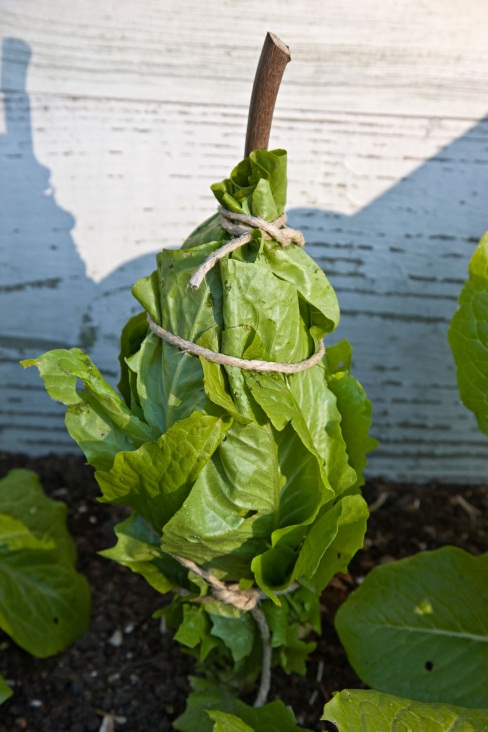
Now that the weather has cooled we can begin whiting the Cos.
This is the most ancient form of lettuce, named for the Isle of Kos in the Aegean Sea between Greece and Turkey. From there it was transported to Italy and from Italy to the rest of Europe, where it was known as Roman or Romaine Lettuce — the designation this group of upright, open headed lettuces are known by to this day.

Cos lettuce tends to be somewhat coarse and bitter when compared to the sweeter heading lettuces such as Tennis Ball or Brown Dutch, but this deficiency can be remedied by the process of whiting or blanching.
There are several ways to achieve this, but all of the methods work to exclude light from the heart of the plant which leaches away the chlorophyll and produces a much tenderer and sweeter product.
We take our instruction from an ancient source. In 1611 Giacomo Castelvetro was rescued from the cruel injustice of the Italian inquisition by Sir Dudley Carleton and brought to London. While in exile he wrote a book for the benefit of all Englishmen who, until that time, were not well versed in the finer points of gardening.
In “The Fruits, Herbs & Vegetables of Italy,” published in 1614 he instructs, “Our ingenious gardeners tie [the Cos] tightly together round a cane, so that the insides blanch as white as snow and become wonderfully crisp.”
To blanch Cos lettuce let the plants grow until the outer leaves begin to fall. Then take a stout thread and bind them.
Begin by tying a loop at the base of the plant and around a stick or cane.
Fold the leaves together as the string is spiraled to the top of the leaves, making a proper head.
In a fortnight the lettuce will head handsomely and produce what is known by modern garden as Hearts of Romaine.
I will be away over the next week, but we will resume our conversation the week after.

Leave a Reply